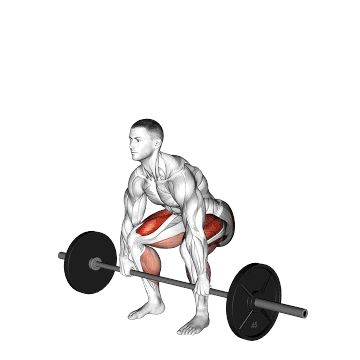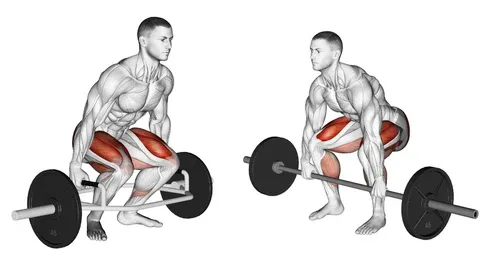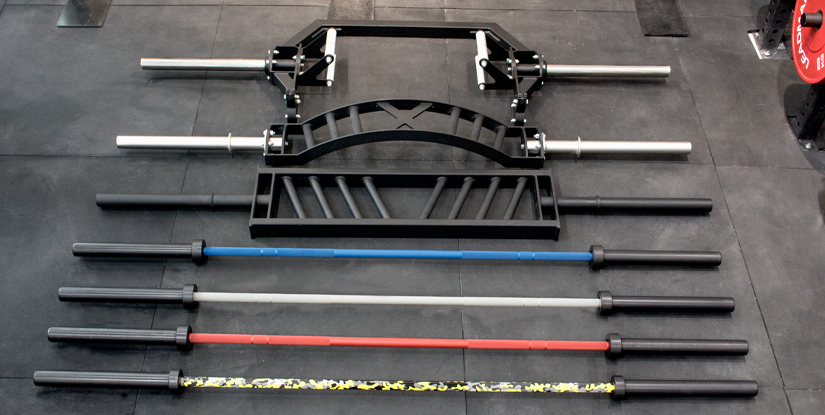Hex bar vs barbell deadlift — ever feel stuck picking between them?
You’re not sure which one hits harder. You’ve heard hex bar is easier on your back. But barbell? That’s the “classic” deadlift. So which is actually better?
Here’s the real difference:
Hex bar keeps the weight centered. Barbell shifts it in front of you.
That one thing changes how your body moves, what muscles work hardest, and how safe it feels.
So if you’ve ever stood in the gym wondering what to pull — this is for you.
We’ll break it down simple: what each one does, how they feel, and how to choose what fits you.
What is the Hex Bar Deadlift?
Hex bar vs barbell deadlift — if you’ve ever stood there in the gym wondering which to do, you’re not alone.
The hex bar deadlift (also called the trap bar version) is where you step inside a big metal frame and lift from the sides. It still works your legs, butt, and back — but it feels a lot different than the regular barbell kind.

✅ Movement
The movement’s more upright, more balanced, and just feels easier to control.
- You step inside the bar
You’re not behind it like with a straight bar — you’re standing in it. - You grab the side handles
Arms hang straight down. No reaching forward. Just grip and go. - You stay tall
No crazy hip bend. Chest up, back flat — you’re almost standing straight. - You push through your legs
Less pulling with your back. More driving with your legs, like a leg press.
✅ Benefits
It’s easier to learn, feels safer, and lets most people lift heavier.
- Back feels better
The weight’s not yanking you forward, so less pressure on your lower back. - Simple to learn
You don’t need to think about form too much. Most people get it right fast. - More leg work
Your quads do more here than with a barbell. Great if you want strong legs. - You can load more weight
The position gives you better control. It just feels stronger and smoother.
What is the Barbell Deadlift?
Deadlift hex bar vs barbell — when most people say “deadlift,” they’re usually talking about the barbell version.
It’s a classic. You step up to a straight bar, bend over, grab it, and pull. This move hits your whole backside — glutes, hamstrings, lower back, and more. It’s one of the best strength training in the gym.

✅ Movement
The barbell deadlift? It’s all about using your hips. Push back, then pull hard.
- You stand behind the bar
It should be over the middle of your feet. Toes pointed slightly out. - You grip outside your legs
Hands are just outside your knees. Back stays tight, chest up. - You hinge, not squat
Your hips go back first. Knees bend a little, but not too much. - You pull close to your body
The bar scrapes your shins on the way up — happens to a lot of people.
✅ Benefits
Harder to learn, but builds serious full-body strength if you get it right.
- Works more muscles
Back, glutes, hamstrings, grip, and core — everything’s in play. - It’s a raw power movement
Used in powerlifting, tested in sports, loved by strength coaches. - Teaches discipline
Form matters. You can’t just muscle through it. You have to focus. - Great for serious lifters
Trying to pull big numbers? This is the one to focus on.
Hex Bar vs Barbell Deadlift: Key Differences

Alright, so you’ve seen what both feel like — let’s put them head-to-head.
Hex bar vs barbell deadlifts isn’t just about what looks cooler at the gym — it’s about how they feel, what they train, and which one fits you better.
Here’s a quick comparison:
| Feature | Hex Bar Deadlift | Barbell Deadlift |
|---|---|---|
| Bar Position | You stand inside | Bar is in front of your legs |
| Grip | Neutral, arms at sides | Overhand/mixed, hands outside knees |
| Body Position | More upright, less lean | More forward lean, hip hinge dominant |
| Main Muscles Used | More quads, glutes, less lower back | Glutes, hamstrings, back, core |
| Spinal Load | Lower — weight stays centered | Higher — weight pulls you forward |
| Ease of Learning | Easier, good for beginners | Technical, needs solid form |
| Max Load Potential | Usually heavier due to leverage | Often lighter, but more technical strength |
| Best For | Athletes, general fitness, rehab, new lifters | Powerlifters, strength-focused lifters |
If you’re just lifting for health, confidence, or general strength, the hex bar feels smoother and less risky.
But if you’re chasing numbers or training for powerlifting? The barbell’s the one to master.
Either way, it’s not about which one is “better.” It’s about which one works better for you.
Which One Should You Do?
Barbell vs hex bar deadlift — sounds like a big debate, but choosing between them? Actually pretty simple.
It just depends on what kind of lifter you
Let’s break it down real quick:
✅ New to lifting?
Go hex bar. Easy setup, easier to do right, and less to worry about.
You won’t be stressing about your back angle or bar path — you just grab it and go.
✅ Tired of your lower back getting wrecked?
Also hex bar. Since the weight stays close to you, it’s way easier on your spine.
You can train hard without walking out of the gym feeling like a broken chair.
✅ Want to build serious strength?
Barbell’s your move. It’s tougher, but it makes you stronger in the long run.
You’ll feel it everywhere — hamstrings, back, even your grip.
✅ Training for sports or speed?
Hex bar is gold. You can move fast with it. It’s what a lot of athletes use for power and jump work.
You’ll feel quick off the floor, not stuck in mud.
✅ Just want to feel strong and lift heavy?
Both are ok. Use the one that makes you feel strong and doesn’t make you dread the next session.
Final Thoughts
So… hex bar deadlift vs barbell deadlift — which one wins?
Truth is, there’s no clear winner. Both are solid. Both build strength. They just feel different.
One’s more upright and leg-driven. The other’s all about that hip hinge and back power.
Try both if you can. See what clicks.
Some days you might love how stable the hex bar feels. Other days you might want the raw grind of the barbell. Totally normal. You’re showing up, figuring things out, and not messing yourself up — that’s a win already.
End of the day? Just go with the one that feels good and keeps you coming back.
That’s the real win.

Hi, I’m Alex Carter, part of the editorial team at Leadman Fitness. We specialize in crafting premium custom racks, cable machines, functional trainers, and strength accessories for home and commercial gyms. With a background in competitive powerlifting and gym design consulting, I’ve spent years testing gear under heavy loads and optimizing layouts for efficiency.
I focus on translating real-world user frustrations—like space limitations, budget constraints, or durability needs—into actionable solutions. By collaborating directly with our engineers and facility owners, I ensure our custom equipment evolves to solve the unspoken challenges lifters face daily. What I share isn’t textbook advice; it’s battle-tested insight from racks I’ve welded, cables I’ve replaced, and gym floors I’ve trained on.
